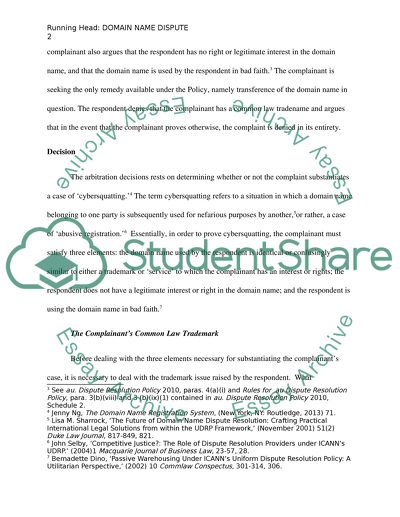Cite this document
(“Domain Name Dispute Assessment Task Essay Example | Topics and Well Written Essays - 2000 words - 2”, n.d.)
Retrieved from https://studentshare.org/law/1658512-domain-name-dispute-assessment-task
Retrieved from https://studentshare.org/law/1658512-domain-name-dispute-assessment-task
(Domain Name Dispute Assessment Task Essay Example | Topics and Well Written Essays - 2000 Words - 2)
https://studentshare.org/law/1658512-domain-name-dispute-assessment-task.
https://studentshare.org/law/1658512-domain-name-dispute-assessment-task.
“Domain Name Dispute Assessment Task Essay Example | Topics and Well Written Essays - 2000 Words - 2”, n.d. https://studentshare.org/law/1658512-domain-name-dispute-assessment-task.


